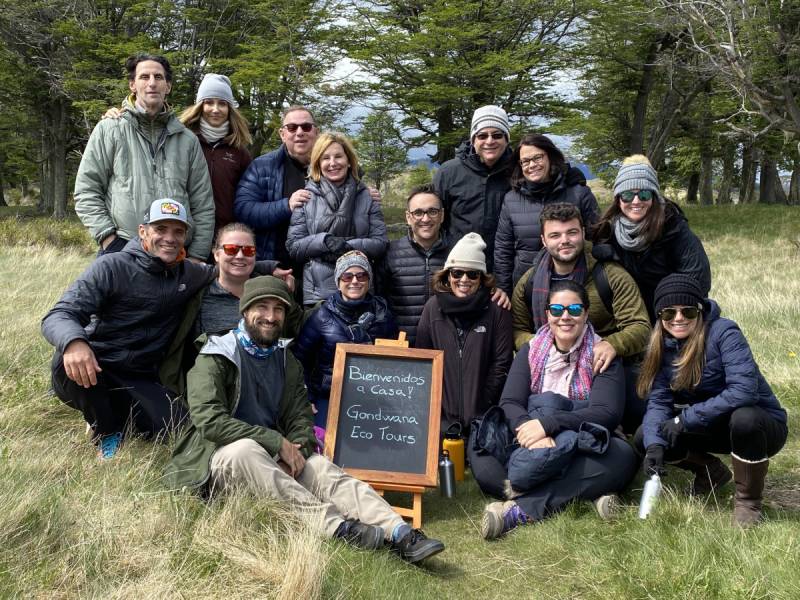Could You Witness the Northern Lights in South Dakota?
PRIVATE & SMALL GROUP TOURS TO THE WORLD'S BEST DESTINATIONS
Are You Planning A Trip To See The Northern Lights?

Where to See the Northern Lights in South Dakota – Best Areas, Tips & Timing
With vast open plains, minimal light pollution, and wide skies, South Dakota offers unexpectedly solid potential for viewing the aurora borealis — especially during the peak years of Solar Cycle 25. Its remote western regions, including the Badlands and Black Hills, are particularly favorable for catching a rare glimpse of the Northern Lights.
Top Aurora Hotspots in South Dakota
- Badlands National Park: This rugged landscape offers some of the darkest skies in the state. The layered canyons and rock formations create a striking backdrop for aurora photography.
- Rapid City and Surrounding Black Hills: Elevated terrain and proximity to dark-sky areas like Custer State Park and Mount Rushmore make this region a convenient base for skywatchers.
- Buffalo Gap National Grassland: Adjacent to the Badlands, this lesser-known area boasts unobstructed prairie views and wide horizons — ideal for horizon-level aurora displays.
Seasonal Aurora Outlook for South Dakota
- Spring: Moderate — good during equinox geomagnetic peaks
- Summer: Low — shorter nights and more cloud cover
- Fall: High — clear skies and increased auroral activity
- Winter: Very High — best skies, longest nights, strongest activity
Where to Stay for Aurora Viewing
- Hotel Alex Johnson (Rapid City): A historic hotel with rooftop views and close access to the Black Hills region. Ideal for travelers combining aurora chasing with other sightseeing.
- Cabins near Badlands National Park: Rustic rentals or park-adjacent accommodations give you the best chance of staying close to dark-sky conditions. Some cabin sites offer unobstructed northern views from your doorstep.
- Under Canvas Mount Rushmore: For a luxury glamping experience with dark skies, this site near Keystone offers elevated viewing and comfort.
Aurora Forecast (2026–2030)
This forecast reflects expected global solar activity during Solar Cycle 25. These years are likely to deliver the most frequent geomagnetic storms, which increase aurora visibility even in mid-latitude states like South Dakota.
| Year | Aurora Activity Forecast | Notes |
|---|---|---|
| 2026 | ⭐⭐⭐⭐⭐ Very High | Peak of Solar Cycle 25. Most geomagnetic storms are expected; best chance to view the aurora in South Dakota. |
| 2027 | ⭐⭐⭐⭐½ Extremely High | Continued strong activity as the cycle gradually declines. A great year for aurora chasers. |
| 2028 | ⭐⭐⭐ Moderate to High | Some bright auroras still possible, especially during seasonal equinoxes. |
| 2029 | ⭐⭐ Low to Moderate | Storms become less frequent. Viewing requires more planning and luck. |
| 2030 | ⭐ Low | Activity diminishes as Solar Cycle 25 fades. Aurora sightings become rare again. |
Pro Tips for Aurora Watching in South Dakota
- Monitor the KP index — a reading of 6 or higher offers your best shot in South Dakota.
- Use space weather apps like Aurora Alerts or NOAA’s dashboard to track forecasts.
- Dress warmly and bring extra layers — even spring and fall nights can be cold in open plains.
- A tripod is essential for long-exposure photography — and don’t forget extra batteries.
- Be patient — give yourself multiple nights and stay flexible with locations.
Sources: NOAA, NASA, Space.com, Aurora Tracks
Download all three Alaska tour brochures for tour dates and pricing.

About Gondwana Ecotours
Gondwana Ecoutours specializes in small group and private tours to bucket list destinations around the world. Our itineraries are carefully curated to include both unique nature and culture and fun activities are suitable to most travelers. Traveling with guides who live in the communities we visit add depth and authenticity to the experience.
| See All Tours > |

